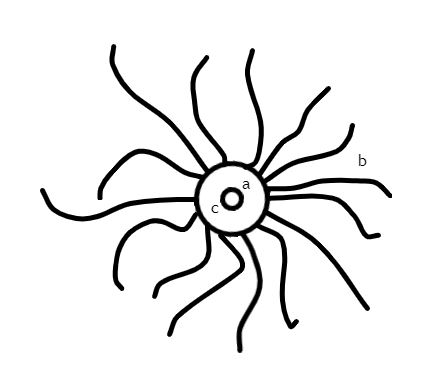Hiemalora on:
[Wikipedia]
[Google]
[Amazon]
 ''Hiemalora'' is a
''Hiemalora'' is a
Image
Ediacaran life Incertae sedis Ediacaran Newfoundland and Labrador Fossil taxa described in 1982 {{paleo-biota-stub
 ''Hiemalora'' is a
''Hiemalora'' is a fossil
A fossil (from Classical Latin , ) is any preserved remains, impression, or trace of any once-living thing from a past geological age. Examples include bones, shells, exoskeletons, stone imprints of animals or microbes, objects preserved ...
of the Ediacaran biota
The Ediacaran (; formerly Vendian) biota is a taxonomic period classification that consists of all life forms that were present on Earth during the Ediacaran Period (). These were composed of enigmatic tubular and frond-shaped, mostly sessi ...
, reaching around 3 cm in diameter, which superficially resembles a sea anemone. The genus has a sack-like body with faint radiating lines originally interpreted as tentacle
In zoology, a tentacle is a flexible, mobile, and elongated organ present in some species of animals, most of them invertebrates. In animal anatomy, tentacles usually occur in one or more pairs. Anatomically, the tentacles of animals work main ...
s, but discovery of a frond-like structure seemingly attached to some ''Heimalora'' has added weight to a competing interpretation: that it represents the holdfast of a larger organism.
In 2020, a new study was published that described nine different from the Indreelva member, Digermulen Peninsula, Finnmark
Finnmark (; se, Finnmárku ; fkv, Finmarku; fi, Ruija ; russian: Финнмарк) was a county in the northern part of Norway, and it is scheduled to become a county again in 2024.
On 1 January 2020, Finnmark was merged with the neighbouri ...
(Arctic Norway
Arctic Norway ( no, Det arktiske Norge) comprises the northernmost parts of Norway that lie above the Arctic circle. Norway reaches from approximately 58°N to 81°N, so large parts lie north of the Arctic circle at 66°33′. In Norway, the nam ...
). The specimens described in the paper have high degrees of variation between morphologies and within the specimens that are though to be of the same species. Some of the representative fossils from that paper either show multiple Aspidella
:Aspidella'' is also a homonym for the mushroom genus '' Saproamanita.
''Aspidella'' is an Ediacaran disk-shaped fossil of uncertain affinity. It is known from the single species ''A. terranovica''.
Morphology
''Aspidella'' consists of di ...
-like structures on the same specimen, or a Primocandelabrum
''Primocandelabrum'' is a genus of rangeomorph known from the Avalon-type Ediacaran biota. It makes up the brunt of some bedding plane assemblages. ''Primocandelabrum'' was described by Hofmann, O'Brien, and King in 2008.
Diversity
Fossil spe ...
-like cone visible in one of the fossils. All of the examples of fossils in the publication were determined to most likely represent the species ''Hiemalora stellaris'', however, one of the more poorly preserved specimens (D18-50) is thought to have been representative of ''Hiemalora pleiomorphus'', although the latter of the species represented by the specimens does not show parallel ridges running along the poorly preserved central disc. A representative of ''H, stellaris'' might have represented a holdfast with a Primocandelabrum
''Primocandelabrum'' is a genus of rangeomorph known from the Avalon-type Ediacaran biota. It makes up the brunt of some bedding plane assemblages. ''Primocandelabrum'' was described by Hofmann, O'Brien, and King in 2008.
Diversity
Fossil spe ...
frond attached to it, which may further support the theory of ''Hiemalora'' being a holdfast for ''Primocandelabrum''.
This interpretation would stand against its original classification in the medusoid
Jellyfish and sea jellies are the informal common names given to the medusa-phase of certain gelatinous members of the subphylum Medusozoa, a major part of the phylum Cnidaria. Jellyfish are mainly free-swimming marine animals with umbrella- ...
Cnidaria
Cnidaria () is a phylum under kingdom Animalia containing over 11,000 species of aquatic animals found both in Fresh water, freshwater and Marine habitats, marine environments, predominantly the latter.
Their distinguishing feature is cnidocyt ...
; it would also consign a once-popular hypothesis placing ''Hiemalora'' in the chondrophore
The chondrophores or porpitids are a small group of hydrozoans in the family Porpitidae. Though it derives from an outdated name for this lineage (see below), some still find the term "chondrophore" useful as a synonym to "porpitid" in discussion ...
s, on the basis of its tentacle structure, to the dustbin. Studies testing the feasibility of hypothesis investigated the possibilities that such fragile tentacles could be preserved, and concluded that it would be very improbable — especially as many ''Hiemalora'' bearing beds also contain such fossils as ''Cyclomedusa
''Cyclomedusa'' is a circular fossil of the Ediacaran biota; it has a circular bump in the middle and as many as five circular growth ridges around it. Many specimens are small, but specimens in excess of 20 cm are known. The concentric dis ...
'', but do not preserve the tentacles on these organisms.
''Hiemalora'' has been identified in a wide range of facies and locations globally.
Etymology
The genus was originally named ''Pinegia'', but was renamed two years later when it was realised that a genus of Permian insect already bore the name. The revised name comes from Latin ''hiemalis ora'', "winter coast".See also
*List of Ediacaran genera
This is a list of all described Ediacaran genera, including the Ediacaran biota. It contains 227 genera.
References
{{reflist, 30em
*
Ediacaran
The Ediacaran Period ( ) is a geological period that spans 96 million years from the end ...
References
External links
Image
Ediacaran life Incertae sedis Ediacaran Newfoundland and Labrador Fossil taxa described in 1982 {{paleo-biota-stub